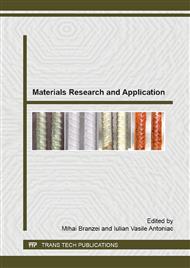p.233
p.239
p.247
p.253
p.258
p.266
p.272
p.278
p.283
Metal Allergy and other Adverse Reactions in Patients with Total Hip Replacement
Abstract:
Total hip prosthese are widely used in total hip arthroplasty, offering many benefit to patients with different articular diseases like osteoarthritis or after different accidents. Many total hip prosthesis are now available to the orthopaedic surgeons to replace the hip articulation, with different design and with components made by different type of biomaterials: metallic (cobalt-chrome and titanium alloys, zirconium-niobium alloy named oxinium), ceramic (alumina, zirconia), polymers (ultra high weight molecular polyethylene-UHMWPE). Even total hip arthroplasty has a high success rate, implant loosening may occur, with different symptoms that could be attributed to metal allergy. Because the stem components of the total hip prosthesis are made by metallic biomaterials, many papers describe the adverse effects related to the release of metal ions (like cytotoxicity, carcinogenicity and metal allergy). There are different types of metal corrosion: intergranular, pitting, crevice, fatigue, stress, fretting, and galvanic. On the other hand, in many cases (like metal-on-metal prosthesis) appear corrosion and wear between two metallic components. This processes are favourable for the aparition of hypersensitivity-related tissue reactions. Especially some metallic ions (nickel, cobalt, and chromium) presents in stainless steels and cobalt-chromium alloys are most known to be released from prostheses components and give metal allergy. Of course, during the time was developped some solutions in order to improve the performance of the hip prostheses components made by metallic components like coating with thin layers using different biomaterials like porous titanium or hydroxiapatite. The aims of this review article were to explore mainly the relationship between corrosion products and implant-related hypersensitivity, the importance of surface treatment for metallic components, try define the effect of metal ion concentrations, and differentiate between allergy and infection in total hip replacement. The long-term performance of the coated components will be also analyzed and synthetic described based on clinical results. Also, some relevant aspects from our clinical experience and retrieved prosthesis analysis using stereomicroscopy and scanning electron microscopy will be shown in order to support the conclusions.
Info:
Periodical:
Pages:
283-287
Citation:
Online since:
July 2015
Authors:
Keywords:
Price:
Сopyright:
© 2015 Trans Tech Publications Ltd. All Rights Reserved
Share:
Citation:


